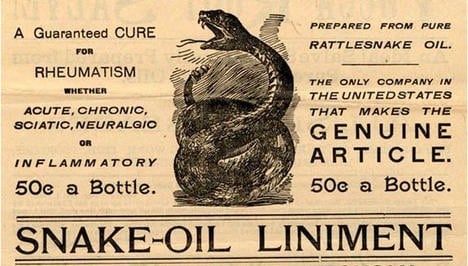How You, the Consumer, Can Properly Evaluate CBD Products
Doubters of the medical efficacy of cannabidiol (CBD) and the other beneficent molecules within trichomes are waning. When you look at product labels within the hemp/CBD market, it’s evident that there’s no standardization. Despite being a federally legal industry, no regulations have yet been generated regarding how a company may portray their products. Product labels that purposely and improperly represent the contents inside serve no point except to pad coffers. Current Good Manufacturing Practices (cGMP) respect product labeling, with guidelines that’ve been determined down to the font size. But there’s no official label, so slippery manufacturers can concoct all sorts of creative marketing variations on the theme. But it’s not real.
Each day, a flurry of buzzwords zips around your eyes and mind like clouds of pesky gnats. Full-spectrum, broad-spectrum, tetrahydrocannabinol (THC) free. I’ve seen full spectrum MCT oil (medium chain triglycerides), which is perplexing, unless there’s an entourage of other molecules extracted from coconut, for example. I’ve even seen true-spectrum, whatever that means.
There’re rumors of isolate tossed into hemp seed oil to feign any type of spectrum, but hemp seed oil contains no CBD, let alone other cannabinoids. Claims of full-spectrum products should be bolstered with a certificate of analysis (CoA) from a 3rd party analytical lab. But often, full-spectrum products are not properly labeled, nor are claims of CBD isolate and THC-free. I’ve witnessed the lab data, as have others [1], and the US Food and Drug Administration has issued warnings. The cited study is from 2017, but after the passing of the 2018 US Farm Bill, how many more players are creating CBD-themed products?
Despite the USA and other countries finally recognizing medicinal aspects of CBD at top governmental levels, charlatans still can ply their wares to the unknowing, unsuspecting masses. The charlatan couldn’t care less what your medical condition(s) might be, or whether their product is as claimed. They look at Cannabis sativa and indeed see green, just an e-version of paper that may or may not exist outside of cyberspace.
Thankfully, there’s multitudes of companies who would like to become profitable while simultaneously exemplifying what’s ethical and genuflecting to the plant. The trick for you, the consumer, is to fractionate out the pointless debris. And you do have the power to do this.
- Organic: some nefarious companies might claim this like it means nothing, but if you’ve ever been through the process of getting your products certified, you tend to respect the term. The US Department of Agriculture has a searchable database to find entities with official organic certification. Even if you can’t find what you’re looking for, companies with organic certification have been granted a certificate, which they should brandish, and which should include their certifying agency. And if you see graphics that sully the sanctity of the true organic label plastered on packaging, move on, my friend, move on.
- GMP: just like the organic certification, GMP certification also comes with a certificate. Anyone can Photoshop an image to look like something rooted in reality, but the piece of paper that states who certified the place as GMP should be flaunted (if the company actually has it).
- The CoA versus Full- and Broad-Spectrum: product venders should have lab testing that confirms their label claims. Without that data, the label might as well be gibberish. You can ask any vendor to provide a CoA. While it may not be required (yet), savvy companies wouldn’t dare pass out free, labeled samples without it. It’s a given. And while you needn’t be an expert in deciphering cryptography to elucidate pertinent details from a CoA, they can be a lot to digest. So, if a product says broad-spectrum or THC-free (which really means not detected), look at the THC spot on the CoA to see that it’s empty, whilst ensuring that other cannabinoids are also present. If the label says full-spectrum, look to see that THC was also detected.
- Ingredients: all product ingredients should be identified. Under ingredients, does your label say cannabidiol and not hemp extract? It’s likely isolate. Is that what you expected? I’ve seen one product list MCT and hemp extract as the only two ingredients, then provide, in finer print, that the product was formulated with honey, which might be delicious, but why wasn’t it included as an ingredient? Especially since it’s a known allergen.
- Medical Claims: Anything that sounds medical should be backed up with data. Since long-term restrictions of medical research pervaded for far too long, anecdotal feedback can suffice for more minor conditions, but some evidence is warranted nonetheless. Product guarantees are bunkum without data to prove them.
- No service, no dice: customer service people are there to serve you, the customer. No service, no sale. It’s that sample. Move on, and fast! If a product really is what it’s claimed to be, service people should be damn proud to discuss it.
Don’t settle. These products are often too expensive to fork over your bread to someone who could care less about you or Cannabis sativa. You, and the plant, deserve better.
Reference
[1] Bonn-Miller, M. et al. “Labeling Accuracy of Cannabidiol Extracts Sold Online,” JAMA, 2017, 318(17): pp. 1708–1709. [journal impact factor = 51.3; cited by 57]
Image Credit: Medium












